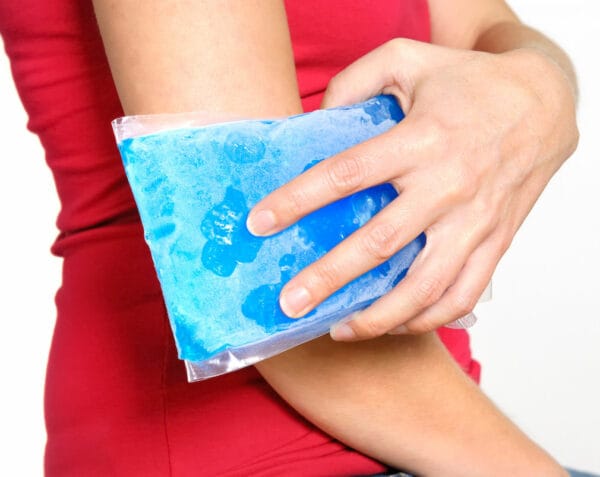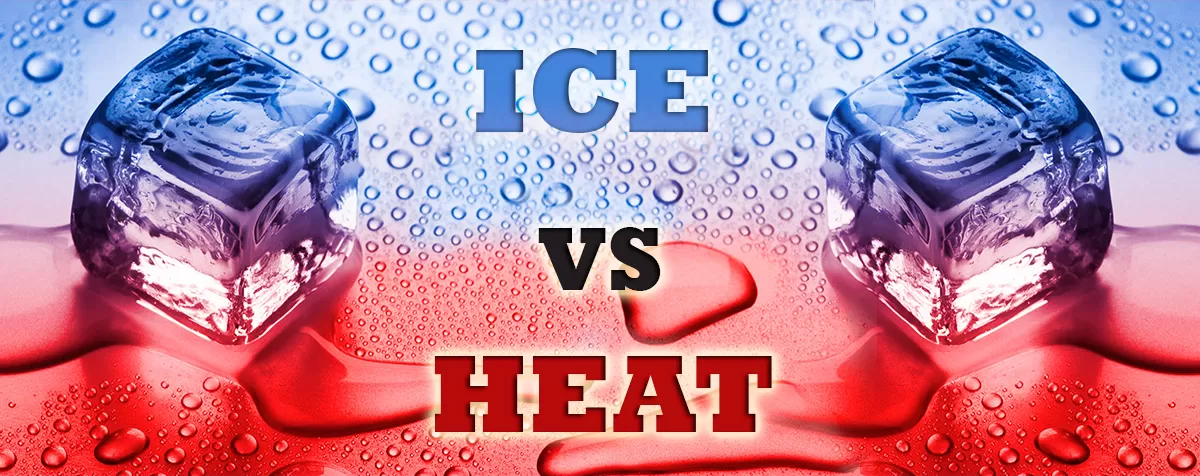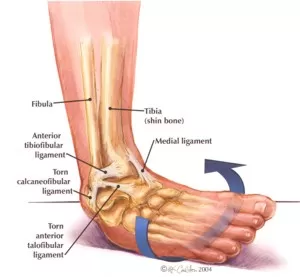One of the most common questions physiotherapists are asked on a daily basis is whether to apply ice or heat to an injury. The answer to this question is dependent on whether the injury is acute or chronic.
Acute Injury
An acute injury has a sudden onset and is typically caused by a significant or traumatic event. Examples of these conditions include ligament sprains, muscle or tendon tears, joint dislocations, and bone fractures. These injuries are accompanied by immediate symptoms including sharp localized pain, inflammation, swelling, and bruising.
Within the first 48-72 hours of acute symptom presentation, it is advised to use ice therapy. In addition to pain control, the effects of ice help reduce swelling and inflammation. Ice application causes a local decrease in body temperature, which reduces metabolic rate and leads to blood vessel constriction. These physiological responses result in less bleeding and fluid accumulation in the area of injury, reducing the amount of swelling and active inflammation. For best results, it is advised to combine ice therapy with rest, elevation, and compression (RICE) of the injured area.

Parameters for ice application:
For use on distal extremities (ex. hands and feet), ice should be applied for 15 minutes or less at a time. For more proximal areas (ex. the shoulder or the hip), ice can be applied for up to 20 minutes. It is important not to exceed this time period, as reverse effects such as blood vessel dilation will occur. Additionally, consecutive sessions of ice therapy should be at least 1 hour apart, to provide the skin time to return to normal temperature between treatments.
Chronic Injury
A chronic injury is gradual in onset and is most often caused by repetitive strain or overuse of a joint or muscle group. Examples of these conditions include tendon strains, muscle strains, and joint capsule adhesions. These injuries typically have no active inflammation due to their slow symptom development, and pain is often milder and more diffuse.
Heat therapy is indicated in the treatment of chronic injuries to help with pain reduction, to accelerate the healing process, and to restore range of motion, and reduce joint stiffness. Heat application causes blood vessel dilation and an increase in the metabolic rate, resulting in increased blood circulation, increased enzyme activity, and an increase in available oxygen to the tissues. These effects accelerate the rate of healing in the area of injury. The use of heat also causes an increase in the extensibility and elasticity of soft tissues (such as muscles, tendons, and ligaments) allowing for increased range of motion and joint flexibility.
Heat can also be applied to any of the above acute injuries after the first 72 hours have passed, or the swelling and inflammation have resolved. This is because at this stage of the injury, the goal of treatment changes from restricting acute inflammatory activity to tissue stretching and healing.
Parameters for heat application:
Heat may be applied to any injured area for 15-20 minutes at a time. In order to prevent burning, the temperature of the heat should be kept below 45 degrees Celsius.
Important Tips:
- Heat or ice should not be applied to an area where sensation is impaired
- Don’t apply heat over a region of a known or suspected blood clot
- Do not apply heat over the low back or abdomen of a pregnant woman
- Do not apply heat or ice directly over an open wound
- The positive effects of both heat and ice therapy are best observed when combined with physical therapy and exercise!
For information about what will work best for your injury, ask your physiotherapist at Triangle Physiotherapy and Rehabilitation!
Click HERE to book an appointment with a physiotherapist at one of our eight locations.
- Physiotherapy Etobicoke – Triangle Physiotherapy Etobicoke
- Oakville Physiotherapy Clinic – Triangle Physiotherapy Oakville
- Physiotherapy North York – Triangle Physiotherapy North York
- Mississauga Physiotherapy Clinics – Triangle Physiotherapy Mississauga
- Downtown Physiotherapy Clinics – Triangle Physiotherapy King West
- Uptown Physiotherapy Clinics – Triangle Physiotherapy Lawrence Park
- Physiotherapy Clinic Downtown Toronto – Triangle Physiotherapy Queens Quay
- Physiotherapy Clinics Mississauga – Triangle Physiotherapy Erin Mills
Choosing between ice and heat for injury management can depend on the type of injury and its stage of healing, and physiotherapy can provide guidance on the best approach. If you need professional physiotherapy services to help manage injuries and recovery, consider visiting clinics in physiotherapy Etobicoke, Oakville, North York, Toronto, Lawrence Park, Queens Quay, Erin Mills, Mississauga, and Liberty Village. These locations offer expert care and personalized treatment plans to support your healing process.




